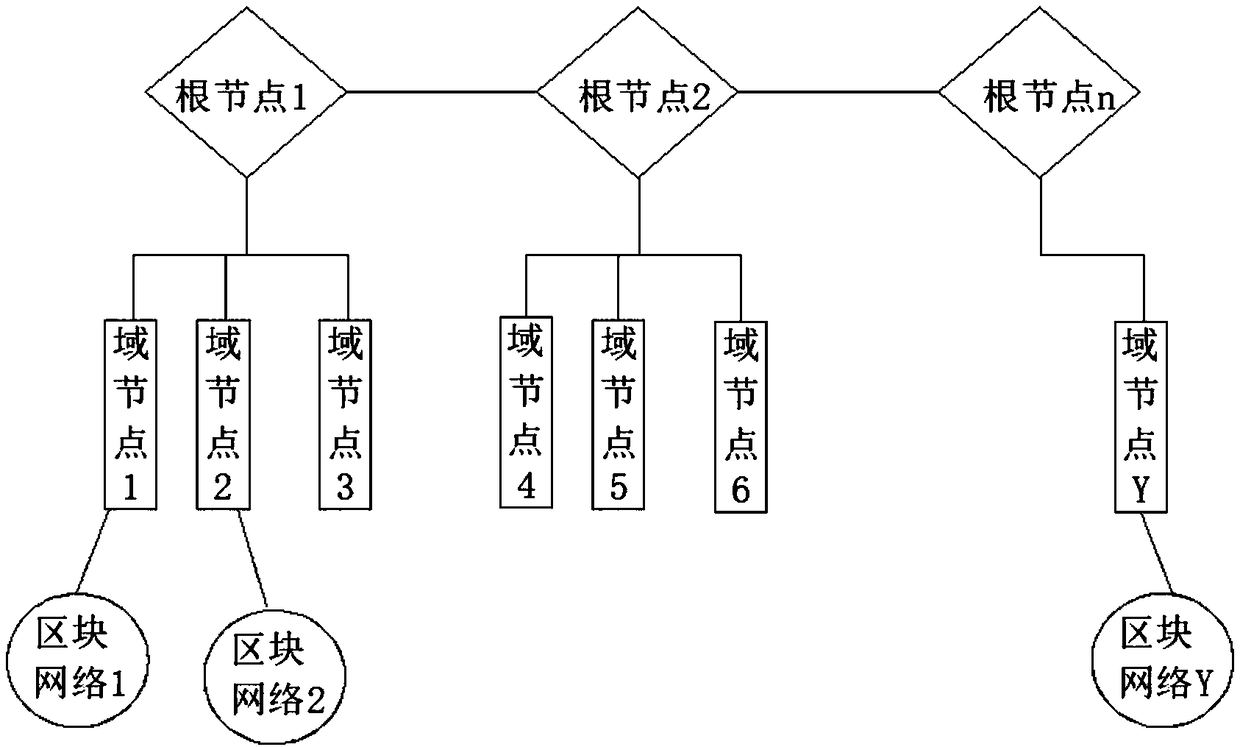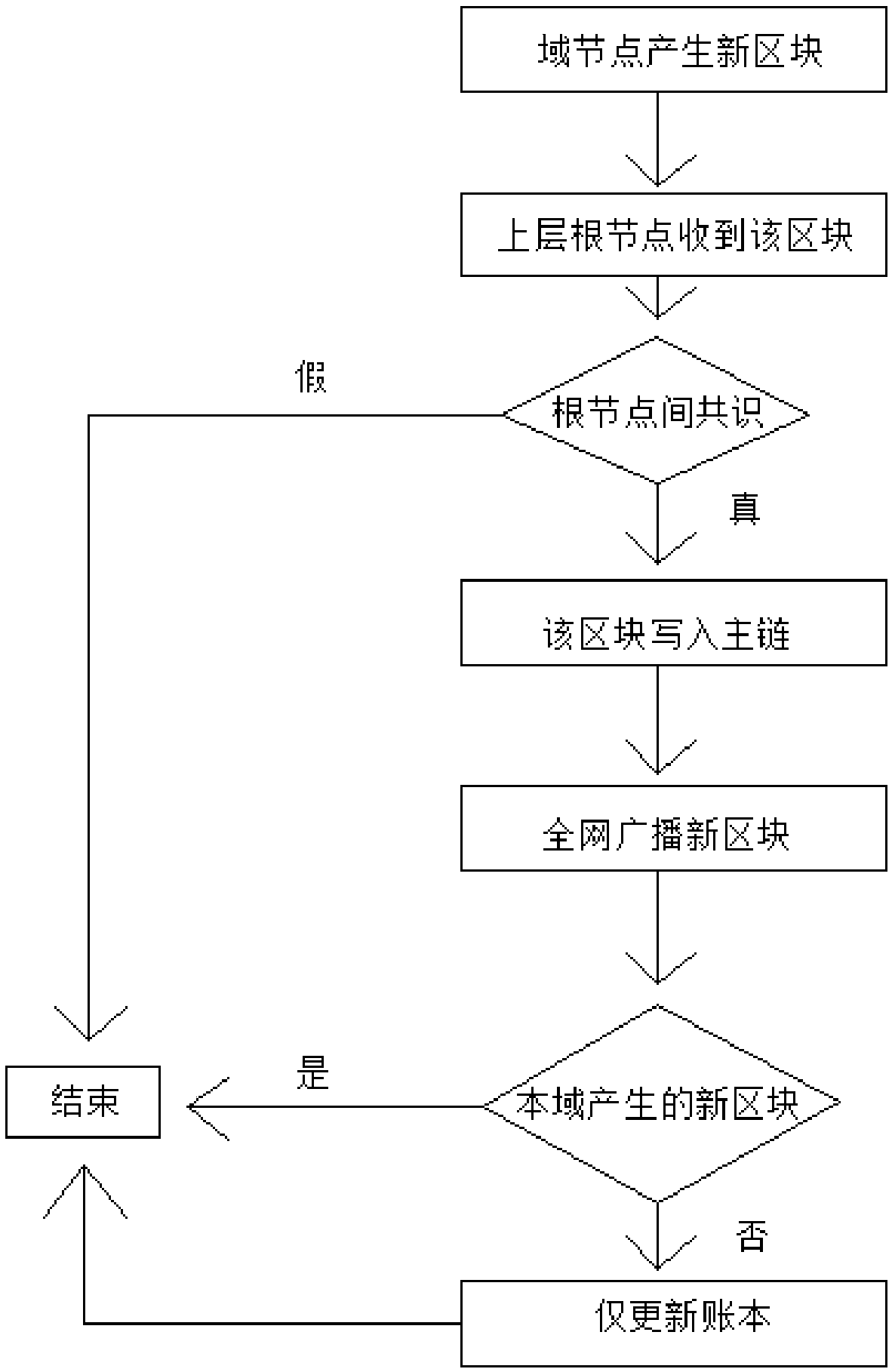Domain-division-based blockchain transaction processing method and network
A transaction processing and blockchain technology, applied in data processing applications, instruments, finance, etc., can solve the problems of not considering the geographical location of users, little effect of expansion, and low efficiency of fragmented communication, so as to improve the throughput of the entire network The effect of high volume, improved processing performance, and simple structure
- Summary
- Abstract
- Description
- Claims
- Application Information
AI Technical Summary
Problems solved by technology
Method used
Image
Examples
Embodiment 1
[0024] Such as figure 1 As shown, a domain-based blockchain transaction processing method includes the following steps:
[0025] (1) According to the geographical location combined with DNS and load balancing technology, several root nodes are pre-allocated in the network, and there are several domain nodes under each root node;
[0026] (2) Blocks are generated in the domain according to the consensus algorithm. When a block node is started, the corresponding root node is first queried. The root node returns the domain node information to be added to the domain to the block node according to the network information of the block node. The block node joins the domain through the domain node;
[0027] (3) After the block is generated in the domain according to the consensus algorithm, the block needs to be sent to the root node. After a consensus is obtained between the root nodes, the new block is written into the sub-chain in the domain, otherwise the block is discarded. At the same ...
Embodiment 2
[0034] Such as figure 2 As shown, a domain-based blockchain transaction network includes a number of root nodes, each root node is provided with a number of domain nodes, the block nodes in the domain nodes form a corresponding block network, and each root node The following domain nodes are relatively independent and can update and synchronize transaction data on their own. It is not necessary to broadcast and save transaction data on the entire network, but only need to update the ledger information, thereby improving transaction speed and transaction throughput.
Embodiment 3
[0036] Such as image 3 As shown, the process of generating new blocks in the domain includes:
[0037] (1) A new block is generated through a consensus algorithm in a certain domain;
[0038] (2) The domain node sends the generated new block to the corresponding upper root node, and the root node receives the new block;
[0039] (3) A consensus is reached between the root nodes and the result is returned to the domain node. The domain node returns the result according to the status of the root node. If it is true, the new block is added to the sub-chain in the domain, and the root node writes the new block information In the main chain, there is an index pointing to the block data in the domain. If it is false, the new block is directly discarded;
[0040] (4) After a new block is agreed by the root node, it is broadcast to the entire network. After other domains receive the information, they only need to update the ledger information and do not need to write it into the sub-chain o...
PUM
 Login to View More
Login to View More Abstract
Description
Claims
Application Information
 Login to View More
Login to View More - R&D
- Intellectual Property
- Life Sciences
- Materials
- Tech Scout
- Unparalleled Data Quality
- Higher Quality Content
- 60% Fewer Hallucinations
Browse by: Latest US Patents, China's latest patents, Technical Efficacy Thesaurus, Application Domain, Technology Topic, Popular Technical Reports.
© 2025 PatSnap. All rights reserved.Legal|Privacy policy|Modern Slavery Act Transparency Statement|Sitemap|About US| Contact US: help@patsnap.com



